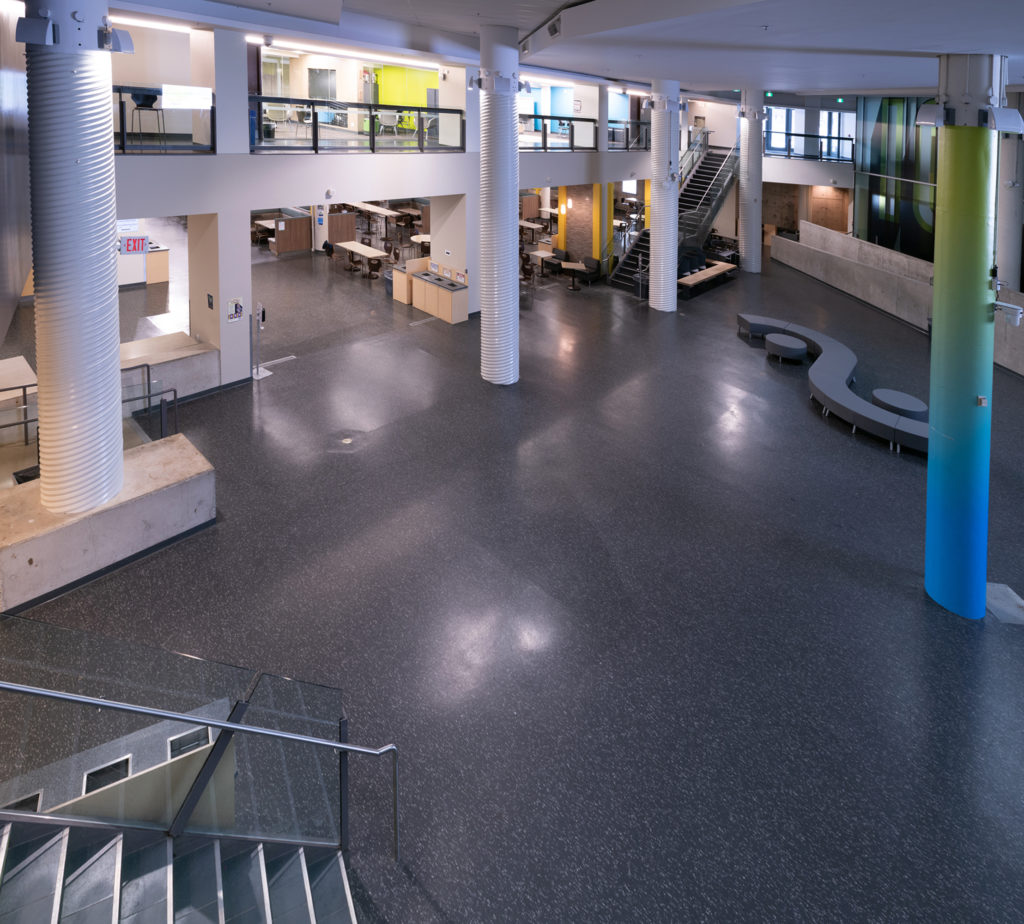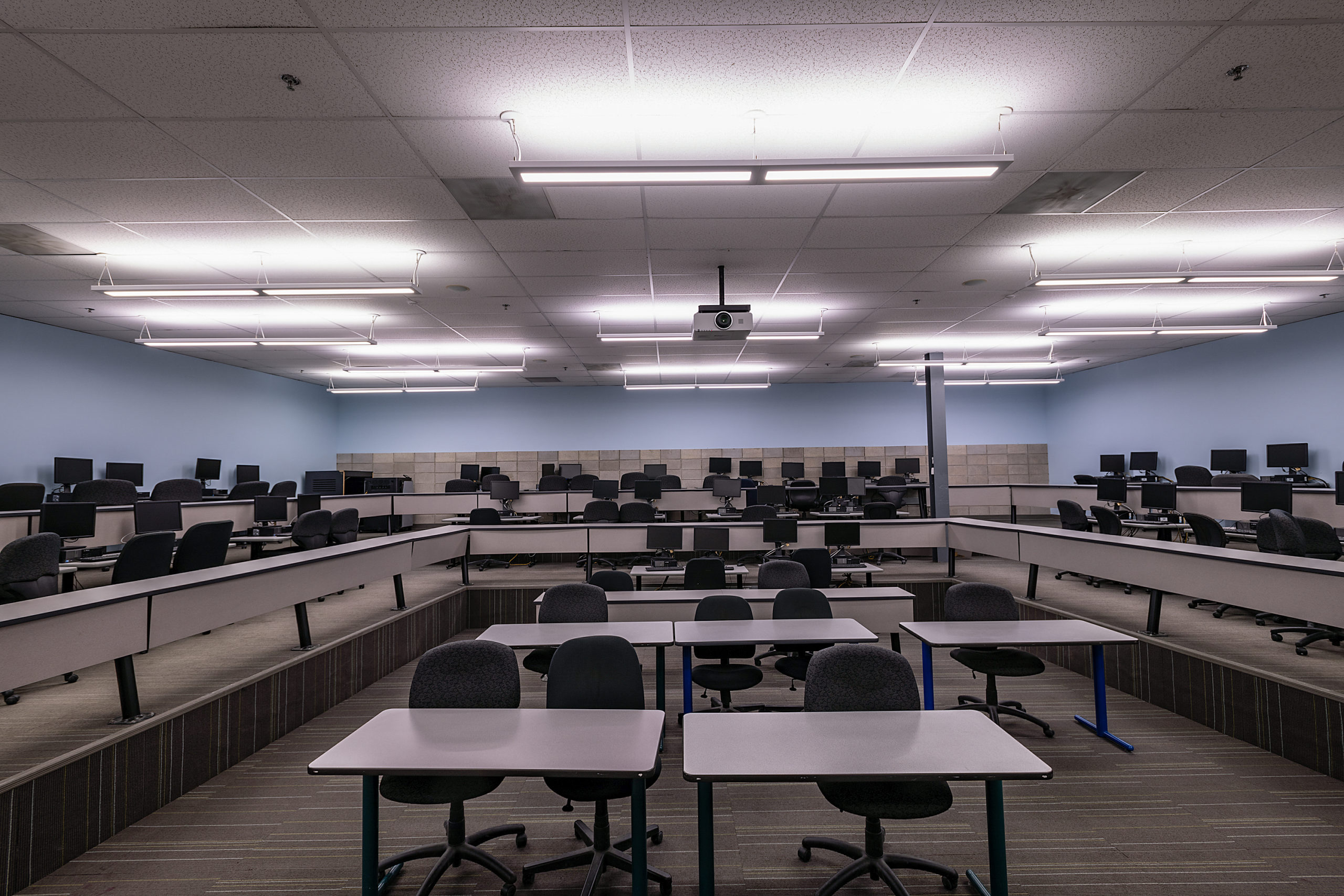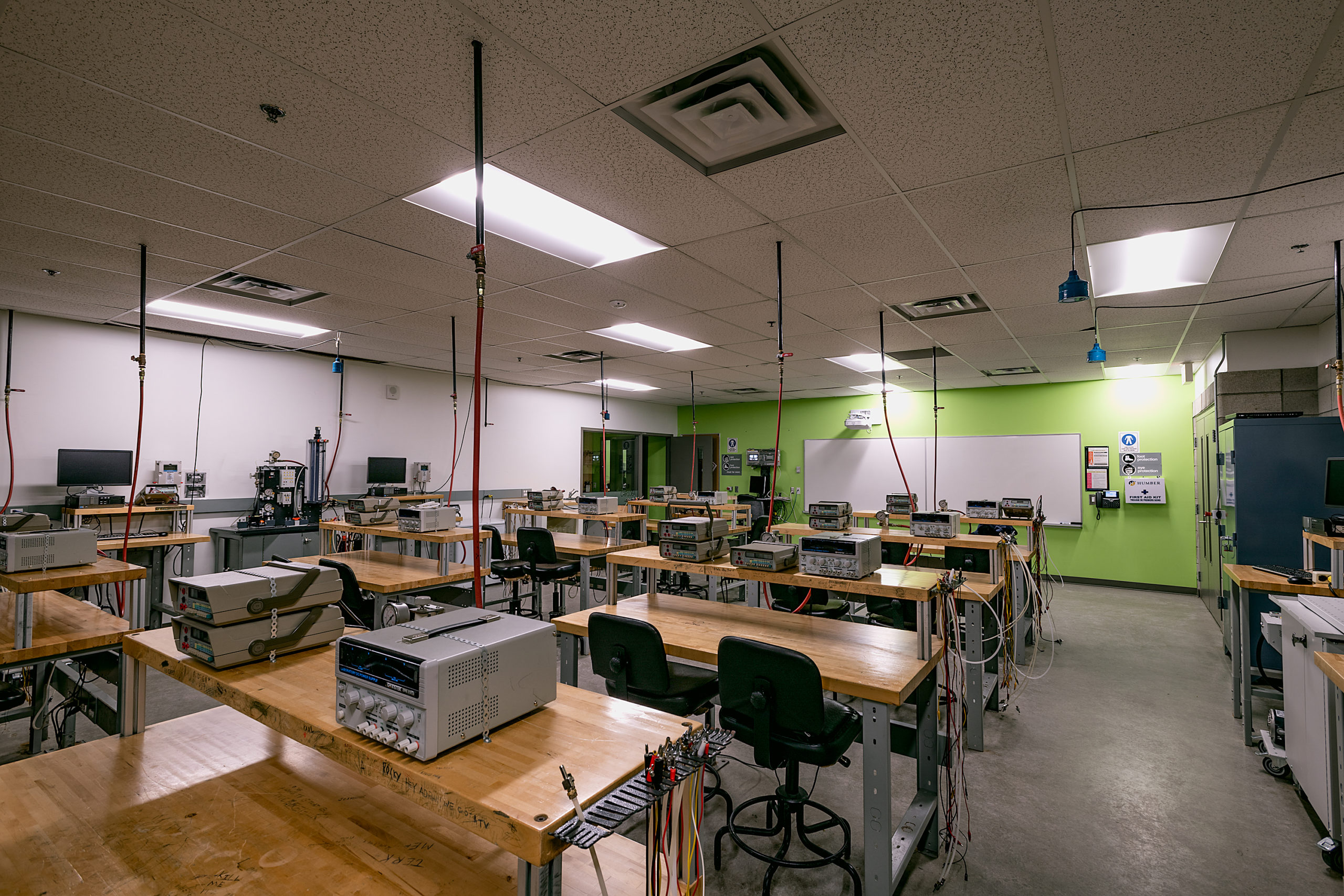
Humber College is one of Canada’s leading post-secondary institutions, offering a polytechnic education that emphasizes a solid academic foundation and practical, hands-on learning. The college has more than 32,000 full-time students and offers bachelor’s degrees, diplomas, graduate certificates, and apprenticeships in more than 180 programs. Its mission is to develop global citizens with the knowledge and skills to lead and innovate.
Humber has created a culture of sustainability. In support of Canada’s commitment to reduce greenhouse gas emissions, Humber College has recognized the importance of examining energy and water consumption more strategically. In 2015, Humber developed an Integrated Energy Master Plan (IEMP) in order to considerably reduce the College’s use of energy and water over the next two decades. The goals are ambitious and aim to reduce energy and water consumption by 50%, and carbon emissions by at least 30%, by 2034.
The College’s carbon emissions goal is especially ambitious as it is tracked against absolute emissions for a college that is planning significant growth. As evidence of the College’s commitment to its IEMP, the College has a dedicated Energy Efficiency team, and sustainability is integrated into operations and student learning. Achievements on campus are the result of projects and partnerships with milestones that encourage community engagement and academics. One impressive result is that Humber has been named one of Canada’s Greenest Employers for four consecutive years (2016-2019).
- Humber College Student Center Lounge
A recent energy-efficiency initiative focused on upgrading the lighting systems in 20 buildings that have classrooms, labs, lecture halls, offices, indoor athletic facilities, corridors, and other common use areas. In addition to upgrading from traditional fluorescent to the latest LED technology using new and retrofit fixtures, the Energy Efficiency team determined a scalable, flexible Networked Light Management System was required. They needed the ability to centrally manage the lighting in all 20 buildings (adding more in the future) and leverage a number of smart lighting control strategies to achieve additional efficiencies.
System integration between the Lighting Management System and an existing Siemens Building Automation System (BAS) was required for additional energy savings and efficiencies. In addition, wireless system capabilities were determined mandatory given the project was primarily a retrofit application and the College’s need for a minimally disruptive, cost-sensitive installation.
The Encelium Light Management System was chosen to give Humber a centrally managed system with robust features and functionality including wireless capabilities. Additionally, Viscor, an OSRAM ONiX specification-ready OEM partner, integrated OSRAM OPTOTRONIC® LED Drivers and Connected Lighting Modules (CLMs) into Viscor LRTH Series Troffers at the factory prior to installation. With the CLM integration, these fixtures are individually controlled as smart nodes on the Encelium system network.
System Integration
The Encelium Light Management System easily integrated Humber’s Building Automation System (BAS) by Siemens through the Encelium BACnet® integration option. This integration enables occupancy sensors on the Encelium System to automatically turn ON/OFF HVAC when spaces are occupied/unoccupied. Additionally, BACnet integration enables Humber to load shed lighting automatically during peak periods. A demand response command is set in the BAS and sent through BACnet to the Encelium System and Polaris software. Lights are dimmed during peak periods in the provincial electricity grid to reduce load and lower utility costs, yet still, provide effective light levels for building occupants. The lighting load shed is monitored in Polaris software.
“The Encelium System’s functionality, wireless capabilities and integration with our BAS help support Humber’s aggressive sustainability goals. Plus, Polaris software is intuitive and simple to use. Humber has plans to incorporate the Encelium System into our student learning sandbox as a hands-on tool for teaching the next generation about lighting controls.
– AMAN HEHAR, ENERGY EFFICIENCY MANAGER, P. ENG., LEED AP BD+C
Centrally Managed Multiple Lighting Control Strategy
The Encelium system offers a number of advanced lighting control strategies for energy management and creating a comfortable environment for occupants. Humber College leverages virtually all key features and functionality of the Encelium System and has incorporated luminaire-integrated components to maximize lighting system flexibility and optimization. Humber estimates that those buildings retrofitted with the Encelium System and luminaire-integrated Osram OPTOTRONIC LED Drivers and CLMs, have achieved total savings in lighting energy of 70%.
- Humber College Lecture Hall with Encelium Lighting and AV integration
Occupancy sensors trigger both lighting and HVAC. Daylight harvesting is actively used throughout all buildings where natural light is available, facilitating automatic dimming of lights when sufficient ambient light is available. Task tuning creates the appropriate level of light for particular activities or uses of facility space and is adjusted to meet occupant preferences.
Since the lighting system across the campus is now centrally managed, support activities are streamlined. The Energy Efficiency team can view the entire system from their desktop and both monitor and adjust lighting control and related energy usage in a given building, floor, specific area, or individual fixture.
The Humber team which includes staff, contractors, and students has found the Polaris software that facilitates commissioning, usage, and data analysis of the Encelium System installation simple and intuitive.
LEED Certification
Humber is proud of its involvement with Leadership in Energy and Environmental Design (LEED), the most widely used green building rating system in the world. The newly constructed 93,000-square-foot Barrett Centre for Technology Innovation (Barrett CTI) is targeting LEED Platinum certification and net-zero energy use.
- Humber College Electronics Lab
- Humber College Woodworking Shop/Lab
Barrett CTI provides open concept gathering spaces, interactive technology zones, cutting-edge prototyping labs, and more. It will act as an outsourced R&D department for manufacturing companies to experiment with leading-edge technologies and LEED Certification transform ideas into operational efficiencies and marketable products and services, as well as an environment where manufacturers will train employees on advanced technologies.
The Encelium System is supporting the building’s LEED certification by earning points in several categories including indoor environmental quality and energy and atmosphere.
Training the Future
Humber’s Sustainable Energy and Building Technology Program (SEBT) provides multidisciplinary training in renewable energy, along with aspects of building design and construction that can have a significant impact on a building’s energy efficiency. The faculty plans to incorporate the Encelium System into their innovative learning sandbox where students learn how to control, commission, and audit lighting systems as part of their studies. This hands-on approach not only gives students the practical experience and skill working with lighting controls but fosters an intrinsic affinity for sustainability.
Humber College’s Building NX – the first retrofit project to achieve ZCB-Design certification
Humber College’s North Campus, Building NX has been transformed from one of the campus’ most inefficient, to becoming Canada’s first retrofit to achieve a Zero Carbon Building (ZCB) Design Certification from the Canada Green Building Council.






